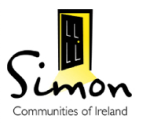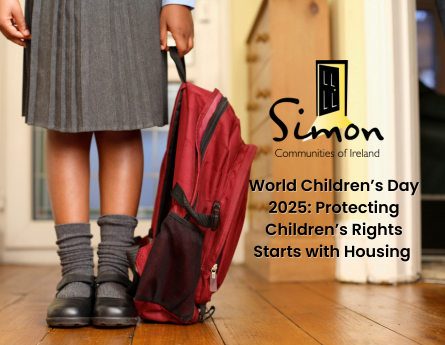In February 2020 there were 10,148 people in emergency accommodation in Ireland. This fell to 8,313 by February, demonstrating that after consecutive years of increases in homelessness in Ireland, the measures introduced during the first lockdown appear to have reset the trajectory of homelessness in Ireland.
The fall in homelessness numbers can be attributed to;
- New homelessness prevention measures which stopped people becoming homelessness in the first place. These included;
- Moratorium on rent increases
- Moratorium on evictions
- Greater flexibility in relation to housing related social welfare payments
- Enhanced outreach by local authority teams to prevent families becoming homeless by securing alternative accommodation
- Increased supply of units to support move on from homelessness services. Increase supply was achieved through;
- Capturing short-term lets which had previously been used for tourism purposes entering the private rental market
- Moving individuals from dormitory settings to single-occupancy rooms, including in hotels.
In the period, homelessness prevention measures were rapidly introduced. By their nature, the measures were temporary and a response to the public health emergency.
The 2020 prevention policies, i.e. the moratorium on evictions, rent freezes, enhanced outreach and greater flexibility in relation to welfare payments, have been part of a highly effective effort to reduce the numbers of people entering homelessness during the pandemic.
The Simon Communities of Ireland believe we must continue on the progress made in 2020 on reducing the numbers of people entering homelessness, by introducing the following policies in the area of homelessness prevention;
- A comprehensive Homelessness Strategy
The Programme for Government states that preventing homelessness is a major priority for the Government. To meet this ambition, the Government should develop a new and comprehensive Homelessness Strategy, with prevention measures fully integrated. This strategy should be developed using the European Typology of Homelessness and Housing Exclusion (ETHOS) which is international best practice.
The new Strategy should be formulated in consultation with homelessness services, Homeless Action Teams and engage government departments and agencies beyond those that are typically involved in provision of homelessness services. The strategy should ensure that policy is informed by a full understanding of the scale of homelessness in Ireland, by tackling the causes of hidden homelessness and circumstances where people are living in precarious accommodation.
- A legislative underpinning and a ring-fenced budget for homelessness prevention work in Local Authorities
A legal underpinning for local authorities to provide homelessness prevention support to individuals should be introduced. An examples of this legislative provision is the Welsh 2014 Homeless Act which sought to put a duty on local authorities to prevent homelessness where possible. Such legislation would seek to formalise and extend and build upon the sound prevention work that local authorities already undertake in Ireland.
For example, the granting of the additional 50% homeless HAP uplift in Dublin is a prevention measure that Dublin local authorities can take where they deem a person to be at risk of homelessness. The latest data from the Department of Housing for Q4 2020 show that of the 1,544 families who presented in the Dublin region in 2020, 55% were prevented from having to enter emergency accommodation by way of tenancy created. Without the assistance of their local authority, those families would likely have been forced to enter emergency homeless accommodation.
To build on this work homeless prevention services must be designed to meet diverse needs of different groups. For example, youth homelessness should form a designated focus of this work, particularly for young people who engage with care services, and those leaving the care system. Prevention of homelessness means every local authority should have outreach teams to identify and support those at risk of homelessness. In practice these initiatives could include outreach to communities; for example, through schools and doctors’ surgeries, to provide timely advice and information where the pressures that can lead to homelessness may be detected.
- Increase the supply of affordable housing to meet the needs of the population, including an increase in the provision of one and two-bedroom properties
Prevention measures require an adequate supply of affordable housing in order to be effective.
Capital expenditure to build affordable, social and cost rental homes must be protected as it represents the best long-term solution to the current homelessness crisis. The Economic and Social Research Institute (ESRI) estimate that we require 30-35,000 homes delivered each year. The construction, make up and access to this housing stock will be critical. In 2020, 61,880 households qualified for social housing support. This suggests we must make provision for 15,000- 20,000 units of social and affordable housing annually.
There is a particular requirement for one and two bedroom units at a level that meets the yearly assessment of housing need and reduce the levels of long-term homelessness. While family homelessness has fallen significantly over the past few months, single people in homelessness has not followed that trend, and instead has continued to rise, with a 7% growth in the number of single people in homelessness by February 2021 on the previous year, to 4590.
The chronic lack of affordable one and two-bedroom properties across the country is regularly demonstrated in our research series Locked Out of the Market. The most recent analysis of the private rental market by the Simon Community in March 2021 found that of the 2,757 properties available on daft.ie across study areas, just one property came within the standard HAP rates for a single person. Just 8 of those properties came within standard HAP rates for a couple with a child.
- Increase Rent Supplement and HAP rates
As demonstrated by Simon Community research through our Locked Out of the Market series, there is an ongoing chronic lack of supply of private rental accommodation within HAP rates across the country. This is particularly the case outside of Dublin, where the discretionary top-up on HAP is limited to 20% increase, rather than the 50% increase permissible in Dublin where an applicant is at risk of homelessness.
While we recognise that increases in housing support payments are a short-term measure to tackle homelessness, rent supplement and Housing Assistant Payments rates must be at a level that reflect the reality of market rates for private rental accommodation. Adequate HAP rates are an important measure in the short-term to allow people to find appropriate private rental accommodation, and prevent households entering emergency accommodation.
Crucially, our analysis of the market shows that where increases in supply of private rental accommodation has become available as a result of the Covid-19 crisis, costs for new supply generally remain high above the standard rate of Housing Assistant Payment. The 50% additional Homeless HAP rate should be available to local authorities across the country, to prevent individuals and families entering homelessness.
- Increase protection for renters to ensure that tenants cannot be evicted into homelessness.
Homelessness is a crisis in this country, and it is a crisis in each person’s life who is experiencing homelessness. Evictions are a key driver of homelessness. The termination of tenancies leaves many individuals and families with no feasible housing option and in recent years many have consistently end up in emergency accommodation as a result, sometimes for extended periods.
The moratorium on evictions in 2020 had a clear impact in reducing family homelessness. In 2020, family homelessness has fallen significantly, falling 42% by February 2021 on February 2020, to 935 families. Statistics from the Department of Housing show that exits from homelessness in the first 9 months of 2020 were up 0.3% on same period in 2019, not a significant increase. Clearly therefore, the driver of the significant fall in family homelessness has been the prevention measures which avoided new families entering homelessness in 2020 to replace those exiting. This is borne out in the data in relation to family homeless presentations in Dublin. In the first nine months of 2020, family presentations were down 28% compared to the corresponding period in 2019.
The Simon Communities of Ireland believe that no individual or family should be evicted into homelessness. Tenancy law must be reformed so that a tenancy cannot be terminated if emergency accommodation is the only option available to that tenant. The Covid-19 pandemic has demonstrated that a moratorium on evictions is possible where there is a pressing public need on the basis of a crisis. The homelessness crisis is of equivalent magnitude in the lives of those impacted. A ban on evictions that leads to homelessness is both a necessary and desirable measure to stop homelessness before it starts.


